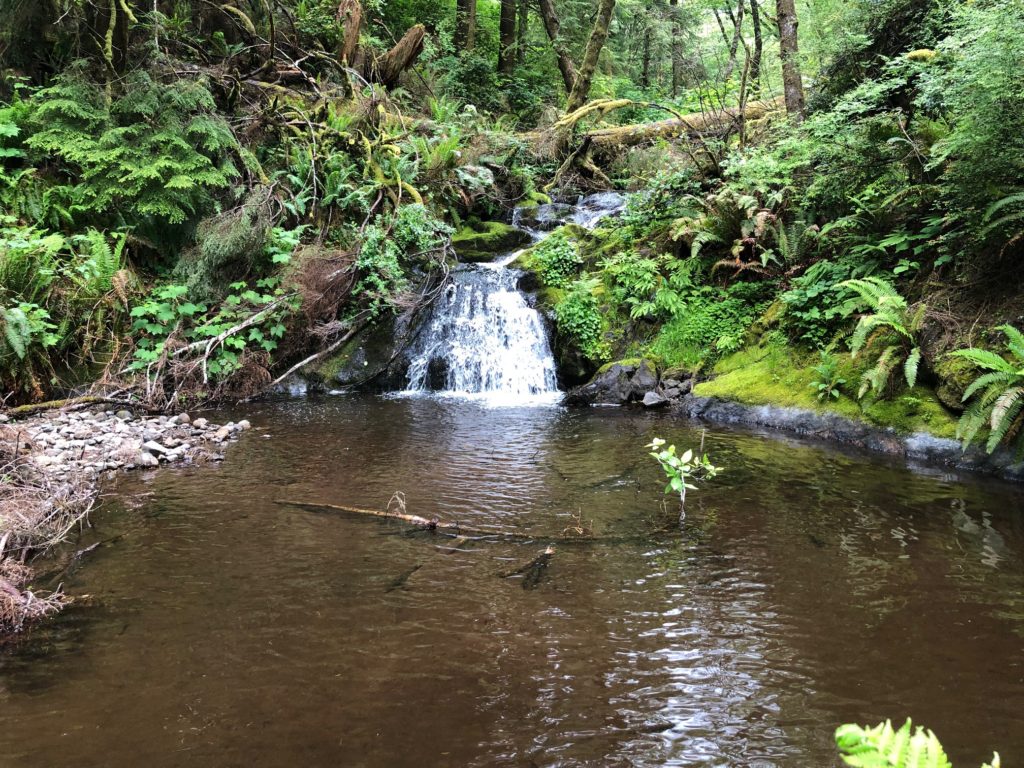
By DANA TIMS/YachatsNews.com
Lincoln County’s declaration of a drought emergency this week is only the first step on a path likely to result in everything from requests for voluntary water curtailment to stronger, mandatory measures if drought conditions persist.
Many water purveyors all along Oregon’s central coast – there are 52 in Lincoln County — are now preparing to issue stage one alerts, which are intended to send the message to customers that low stream flows are likely to affect water availability.
“What we’re seeing is alarming and we want to share that with customers are early and strongly as possible,” said Adam Denlinger, general manager of the Seal Rock Water District. “The flows we are seeing right now are usually the levels we see in August and September.”
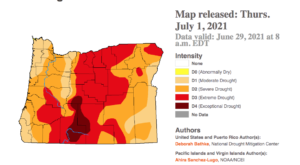
According to data released Thursday by the National Drought Mitigation Center, the south half of Lincoln County is classified as “severe” drought and the north half as “moderate.” Rainfall so far this year in the Yachats area is 76 percent of normal.
Many Lincoln County water providers said they were waiting for the county’s Board of Commissioners to approve a declaration of emergency. The board unanimously approved the declaration Monday, asking Gov. Kate Brown to add Lincoln County to the 15 other Oregon counties already operating under similar declarations.
The declaration noted that the Siletz River is currently flowing at 56 percent of average for this time of year. “It is forecast to approach record daily minimums very shortly,” according to the declaration.
The Alsea River is in even worse shape, discharging at 50 percent of average “and has already set record historical daily minimums.”
Flows on both rivers are low enough that those holding junior water rights “will be regulated off use of their water rights and will not be able to draw water in those circumstances,” the declaration stated.
“This will result in a loss of economic stability, lost growing season, and decreased water supplies for Lincoln County agricultural producers and municipal water suppliers,” it continued. “In addition river water temperatures are already at unseasonable highs and restricted fishing access will likely be put in place very soon to protect fish stocks.”
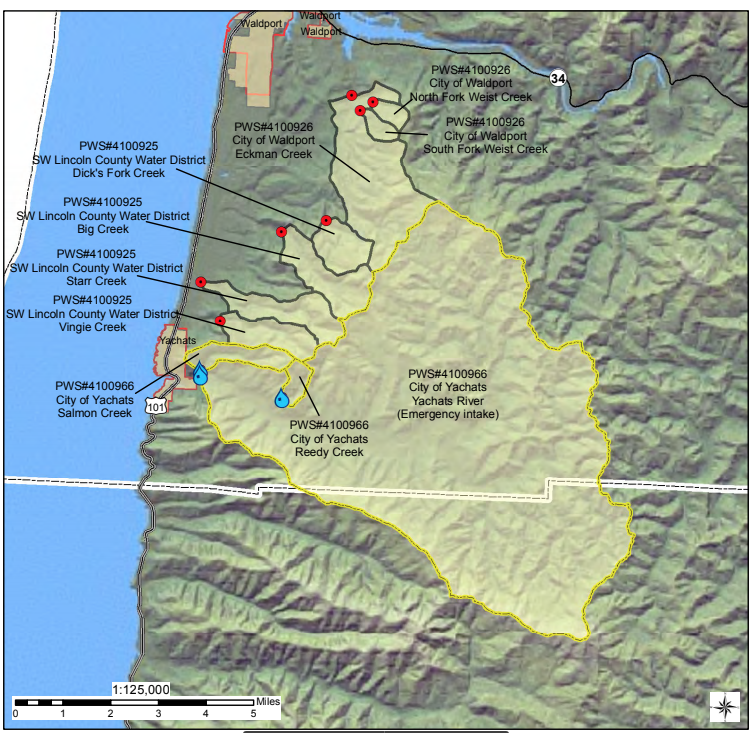
Yachats and Waldport
A survey of area water providers shows the situation isn’t uniform in Lincoln County, mainly because providers draw their water from different sources. Still, officials said they are monitoring the situation closely and are already asking water users to take steps to limit overall use.
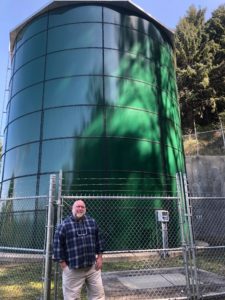
Rick McClung, who oversees Yachats’ water use, said he’s pleasantly surprised that Reedy and Salmon creeks, which supply the city with water, are doing as well as they are.
“Right now, we have a combined flow of over 500 gallons a minute,” he said this week. “We won’t declare a stage one alert until that falls to 275 gallons a minute so we’re a way off still.”
Yachats’ water system has the capacity to produce 450,000 gallons of water a day. It has six storage tanks with a capacity of 1.7 million gallons.
During most June months, Yachats’ 850 residential and commercial customers use an average of 170,000 gallons of water a day, according to McClung. That peaks at 250,000 gallons a day over the July 4th holiday but remains high through August.
Waldport has already hit the milestones needed to declare a stage one alert under its new water-management conservation plan. City officials, like many others along the mid-coast, were only waiting for the county to issue its emergency declaration.
Dann Cutter, Waldport city manager, cautioned that a stage one warning is mainly intended to get peoples’ attention and help persuade them to do what they can to conserve.
“At this point, this is really about awareness,” he said. “It takes awhile for folks to hear this news and react to it. Our stream flows are pretty good right now, but that could change if these drought conditions continue.”
Waldport gets its water mainly from the North and South forks of Weist Creek, with Eckman Creek as an additional, secondary source as needed. The city decided to start pulling from Eckman recently to augment the low flow from the Weist system and keep its reservoirs full, Cutter said.
The city has 1,400 water customers who use an average of 189,000 gallons a day, he said. It has two reservoirs with a capacity of 1.8 million gallons.
June rain was average — but came in 2 days
Rainfall for the month of June was average for the past 10 years, according to records from the city of Yachats – but most of that fell during a heavy storm June 13-14.
The city’s automatic gauge at the wastewater treatment plant measured 2.08 inches in June for a six-month total of 29.60. That is 76 percent of the city’s 10-year average of 38.9 inches.
Adam Altson, who has a manual gauge just a block from the treatment plant, measured 3.08 inches of rain in June, for a six-month total of 40.82 inches.
Jim Adler, who has an automatic gauge three miles up the Yachats River near Reedy Creek, measured 3.04 inches in June, for a six-month total of 45.14 inches.
Altson, who lives on Ocean View Drive overlooking the beach, recorded a high temperature of 73.4 degrees on June 27 — the second highest he’s ever recorded in June — while just six miles east up the Yachats River temperatures reached 106 degrees.
Donald Tucker, who lives two miles north of Yachats and east of U.S. Highway 101, measured 2.13 inches in June for a six-month total of 35.64 inches, lower than his average for the past 16 years.
“As far as long trends since 2007, it’s down for rain and up for temperatures,” Tucker said.
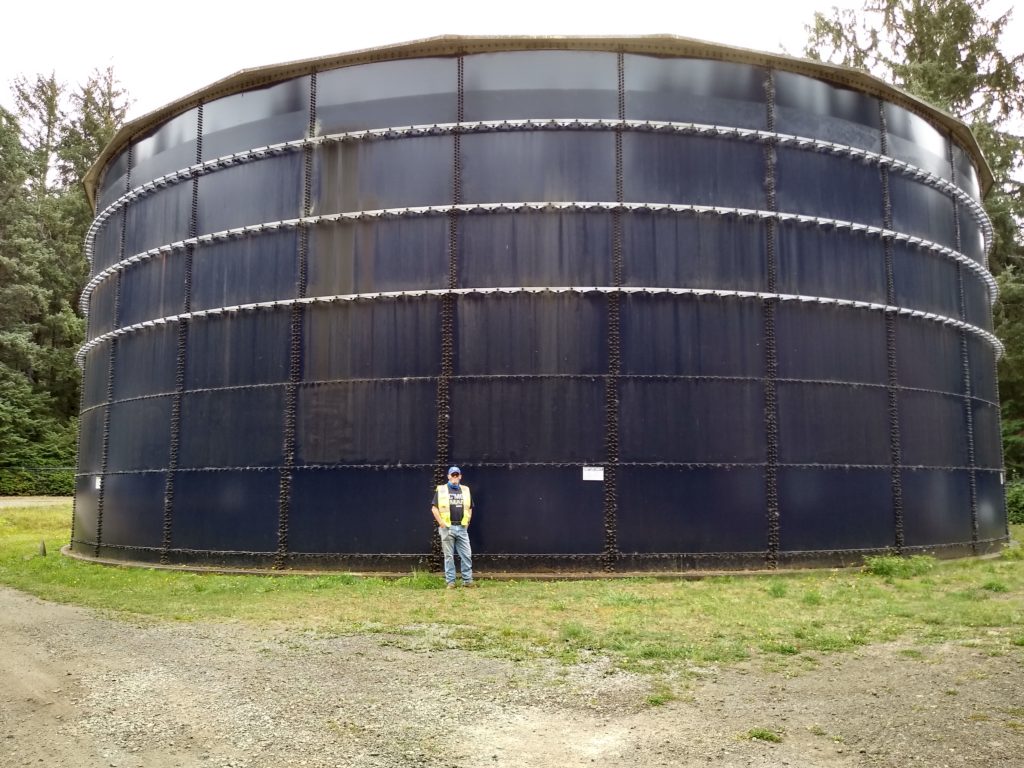
Seal Rock and SW Lincoln
The Seal Rock Water District serves residential and small commercial customers through approximately 2,400 water meters. The 7 million gallons of water the district uses each month comes from the Siletz River and is purchased from the city of Toledo. The district is currently constructing its own treatment plant and intake system that will use water from Beaver Creek so it can end reliance on the water and 10 miles of pipe from Toledo.
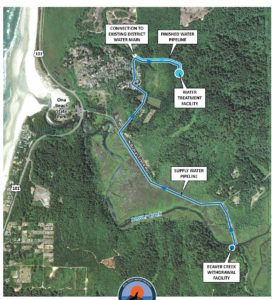
“We’re not in danger of running out of water, but that doesn’t mean we shouldn’t be doing our part to conserve water to ensure it’s there when we need it,” said the district’s Denlinger, who added that a stage one alert is imminent.

Given the voluntary nature of a stage one alert, he listed things residents should be thinking about doing to help. Those include: avoid filling pools and ponds; check for leaks in plumbing fixtures; avoid washing vehicles except at commercial car washes; install water-efficient faucets; sweep driveways instead of hosing them; only run dish washers and washing machines when fully loaded.
“The only thing I’d urge people to do is be aware and be educated,” Denlinger said. “Folks need to know just how fragile our water supply can be.”
Tui Anderson, general manager of the Southwest Lincoln County Water PUD, said supplies for the district are fine right now. What concerns him is how the next two or three months will play out.
The 75-year-old district serves 1,250 homes and businesses between Yachats and Waldport. Relative to some other districts, it enjoys greater supplies, drawing water from four creeks.
It can treat 1.3 million gallons of water a day and its tanks can hold 1.65 million gallons of treated water. Its customers’ average daily water use is 160,000 gallons, peaking to 400,000 gallons a day during the summer.
“We are blessed to have sufficient sources,” Anderson said, “but we, like everybody else, are definitely taking notice of the hot, dry conditions along the coast.”
- Dana Tims is an Oregon freelance writer who contributes regularly to YachatsNews.com. He can be reached at DanaTims24@gmail.com



How much water do the tourist use? When we shut down the visitors coming here using our water taking showers and filling the pools at the motels then I’ll think about conserving and not watering my flowers.